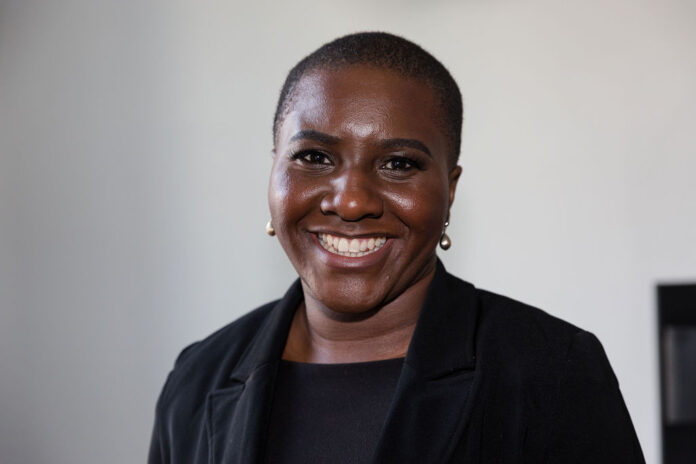In this article, pupil barrister Kitan Ososami discusses the problems with child imprisonment and how the new London Accommodation Pathfinder, a Youth Justice Board pilot designed to support 16–17-year-old boys at risk of custody pre- and post-trial, will attempt to address these.
Analysis by Her Majesty’s Prison and Probation Service (HMPPS) in October 2021 projected that youth custody rates are expected to more than double by September 2024.[i]
This, in part, is attributed to government plans for police officer recruitment, the anticipated “recovery” of the courts from the pandemic, and the impact of the Police, Crime, Sentencing, and Courts Act 2022 with the increased powers it gives to police and the courts.[ii]
Despite recent, positive downward trends in the youth justice system, it is concerning that this stark increase has been identified with no commitment to implementing preventive measures that will ensure it does not become a reality.
The latest Youth Justice Statistics covering the year April 2021 to March 2022 report decreases in the following:
- The number of children being cautioned or sentenced (13% fall in comparison to the previous year and 79% fall over the past 10 years),
- The number of children entering the youth justice system for the first time (10% fall in comparison to the previous year and 78% fall over the past 10 years),
- The number of children being held in custody (450 on average representing a 19% fall in comparison to the previous year, 77% fall over the past 10 years and, notably, the lowest number on record),
- The number of children reoffending (decreased by three percentage points in the last year and another lowest number on record).[iii]
Whilst it is acknowledged that some of these outcomes may be due to the pandemic restrictions reducing opportunity to commit crime, they represent what can be achieved within the youth justice system.
Last year, almost half of all children in custody were being held on remand (45%). Worryingly, 73% of these children did not go on to receive a custodial sentence[iv]. This means that 73% of children lost their liberty, were separated from their support networks, had their education disrupted, and were exposed to the negative effects of imprisonment for no reason.
Statutory provisions contained in sections 98-102 of the Legal Aid Sentencing and Punishment of Offenders Act 2012 and Schedule 1 of the Bail Act 1976 were intended to curtail the number of children remanded into custody. They impose conditions that must be considered by the court when deciding to take this course of action. These include the likelihood of receiving a custodial sentence, the seriousness of the offence, and the welfare of the child. However, the figures highlighted above indicate that, despite these stringent conditions, something is going wrong.
The Howard League for Penal Reform, in their briefing on children on remand, identified how the current system contradicts itself and heightens the vulnerability of children concerned. It illustrates how, often, the youth justice system fails to acknowledge context surrounding offending behaviour and ventures too far into paternalism without regard for the child’s voice. For example, the case study of “Abdul”, a 17-year-old boy who, as a recognised victim of trafficking, was remanded into custody for his welfare, felt even more at risk than in the community. He described how his exploiters were giving orders to other children imprisoned with him, increasing his fear of reprimand.[v] We do not know how many other Abduls there are in custodial settings. However, what we do know is that a careful assessment of the child, their circumstances, and the available support can prevent unnecessary and harmful imprisonment.
The Sentencing Council’s overarching guide on ‘Sentencing children and young people’ states,
‘Domestic and international laws dictate that a custodial sentence should always be a measure of last resort for children and young people.’[vi]
With this in mind, it is difficult to reconcile the high rates of children remanded in custody with the law and widely accepted guidance.
The international law which applies to this area is Article 37(b) of the United Nations Convention on the Rights of the Child (UNCRC). This Convention is the most widely ratified human rights treaty in the world, demonstrating a global commitment to protecting children’s rights.[vii] Notwithstanding, England and Wales have been criticised by the United Nations Committee on the Rights of the Child for the high rates of children in custody and not always using custody as a last resort.[viii] A significant number of children are being remanded into custody and then having their charges discontinued, being acquitted, or receiving community-based sentences.
Arguably, it is a poor indictment of our justice system where the rights of children, a group considered to be among the most vulnerable in our society, are being breached to such an extent as this.
The principal aim, as defined by statute, of the youth justice system is to prevent offending by children.[ix] Additionally, the Sentencing Council’s overarching guide also acknowledges that sentences should focus on rehabilitation where possible. Realistically, what does this look like and how is it achieved in custody?
Even prior to the pandemic and 23-hour lock ups, custodial settings for children have been routinely criticised for high levels of violence, lack of security, inadequate education provision, insufficient mental health care, and reduced opportunity for purposeful activity. On this basis, can it really be said that holding children in custody prevents offending and facilitates rehabilitation?
By the Ministry of Justice and HMPPS’s own admission, much of the youth custodial estate does not meet children’s need for tailored interventions, effective staff relationships, and access to family and local services. They recognise that many establishments are outdated, too large, far away from children’s families and poorly linked to community services. HMPPS considers that its unsuitable provision, alongside a cohort of more serious offenders, has led to decline in children’s safety and outcomes.[x]
By way of an aside: England and Wales have three types of custodial settings for children.
Secure children’s homes (SCH) are designed for boys and girls aged 10-17. They are ran by the local authority and designed to accommodate the most vulnerable children, with the highest staff to child ratio. There are currently eight in the country.
Secure training centres (STC) are privately run and designed for boys and girls aged 12 – 17. There is one STC in the country, following the closure of Rainsbrook STC in December 2021 after Ofsted found it to be ‘inadequate’.[xi]
Young Offender Institutions (YOI) are for boys 15-17. Of the 5 in the country, 4 are ran by HMPPS and one by G4S. They are similar in design to the adult prison estate and accommodate larger numbers.
In considering an alternative to imprisonment, the Youth Justice Board have recently launched their 3-year pilot of the London Accommodation Pathfinder (LAP) which is designed to offer an alternative to 16 -17-year-old boys at “genuine risk of custody” either on remand or post-conviction.[xii] Four properties across London, provided by St Christopher’s charity[xiii], will accommodate 5 boys each to provide “intensive holistic support”.
Its operations manual describes the LAP as playing, “a key role to stabilise a child’s situation whilst keeping them in the community and to enable the start of work on rehabilitation and positive life outcomes”.
One of the main focuses of the LAP will be to support the children shift from a pro-offending identity to pro-social identity. Adopting a trauma-informed approach, the LAP will provide individualised personal and structural support in the form of key worker interaction, meetings with psychologists, education, work training, and self-development sessions.
One factor about the LAP is that it is an agreement between the child, their parent(s), and the Local Authority. Similar to a Referral Order, the child must consent to its terms which include being subject to an electronically monitored curfew, participating in daily sessions and activities, and regular review meetings. This will require a willingness to engage from the child for its impact to be felt.
Interestingly, by virtue of being in the LAP, the child will become a child in care, pursuant to section 20 of the Children Act 1989. This means they will be entitled to the same care planning and review processes as other looked after children.
Academics from Middlesex University’s Centre for Abuse and Trauma Studies have been commissioned to review the LAP. They will analyse the outcomes for children, costs comparisons, benefits, and governance.[xiv] Although the results of this will not be known for a few years, the commencement of this pilot signifies recognition of the pitfalls in our youth justice system and its overreliance on custody. The LAP offers an imaginative and welcomed way out.
[i] https://www.nao.org.uk/wp-content/uploads/2022/04/Children-in-custody-secure-training-centres-and-secure-schools.pdf
[ii] ibid
[iii] https://assets.publishing.service.gov.uk/government/uploads/system/uploads/attachment_data/file/1131414/Youth_Justice_Statistics_2021-22.pdf
[iv] ibid
[v] https://howardleague.org/wp-content/uploads/2022/05/Children-on-remand-voices-lessons.pdf
[vi] https://www.sentencingcouncil.org.uk/overarching-guides/magistrates-court/item/sentencing-children-and-young-people/#Section%20six:%20Available%20sentences
[vii] https://www.unicef.org.uk/what-we-do/un-convention-child-rights/
[viii] https://tbinternet.ohchr.org/_layouts/15/treatybodyexternal/Download.aspx?symbolno=CRC%2fC%2fGBR%2fCO%2f5&Lang=en
[ix] Section 37, Crime and Disorder Act 1998
[x] See, i
[xi] https://www.gov.uk/government/news/rainsbrook-secure-training-centre-branded-inadequate-by-inspectors
[xii] https://www.youtube.com/watch?v=vdJrzNrTbn4&ab_channel=youthjusticeboard
[xiii] https://www.stchris.org.uk/news/st-christophers-fellowship-appointed-as-provider-for-london-accommodation-pathfinder/
[xiv] https://www.mdx.ac.uk/news/2022/10/London-Accommodation-Pathfinder
Kitan Ososami, pupil barrister, Red Lion Chambers





